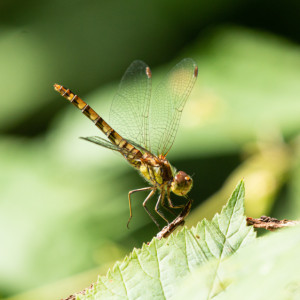Poppies
In honour of John Clare's birthday I had a slow meander round Royce Wood this morning, trying to absorb all its sights and sounds. Before I entered the wood I walked through a small field, rich with Common Poppy and a range of other arable weeds including Scented Mayweed, Field Pansy, Dwarf Spurge and Pale Persicaria. It' the firstgood stand of poppies I've seen locally this year, and they looked stunning in the morning light.
Once I was in the wood the Meadowsweet along the main ride was busy with many of the insects that Clare must have known, with over dozen sorts of butterfly including a rather battered White Admiral and several argumentative male Silver-washed Fritillary. There was also possibly the largest number of Spotted Longhorn beetles that I've ever seen.
Several fresh Southern Hawker dragonflies were patrolling the ride, together with the more elusive Brown Hawkers. In the warm sunshine a Common Darter had adopted the obelisk posture which is a handstand-like position that some dragonflies and damselflies assume to prevent overheating on sunny days. The abdomen is raised until its tip points at the sun, minimizing the surface area exposed to solar radiation (see extra).
A few of these insects would have been completely unknown to him including the large, hornet-mimicking hoverfly Volucella zonaria, which only became established in Britain in the 1940s and is still expanding its range northwards in response to climate change.
We are now reaching the quieter months of the year in woodland, although Chiffchaff and Blackcap were both singing rather half-heartedly. Most have probably now fledged their young, and the dominant soundtrack was the plaintive contact call of baby birds, keeping in touch with their parents.
In Clare's day there would have been many mature oaks in the wood, but now the trees are mostly young and include planted species such as Scots Pine and Beech. He would have recognised many of the woodland flowers though, such as the ethereal blossoms of Enchanter's Nightshade, which can grow in the deepest shade, and the vibrant berries of Wayfaring Tree, a species of hedgerows and wood edges.


Comments
Sign in or get an account to comment.


